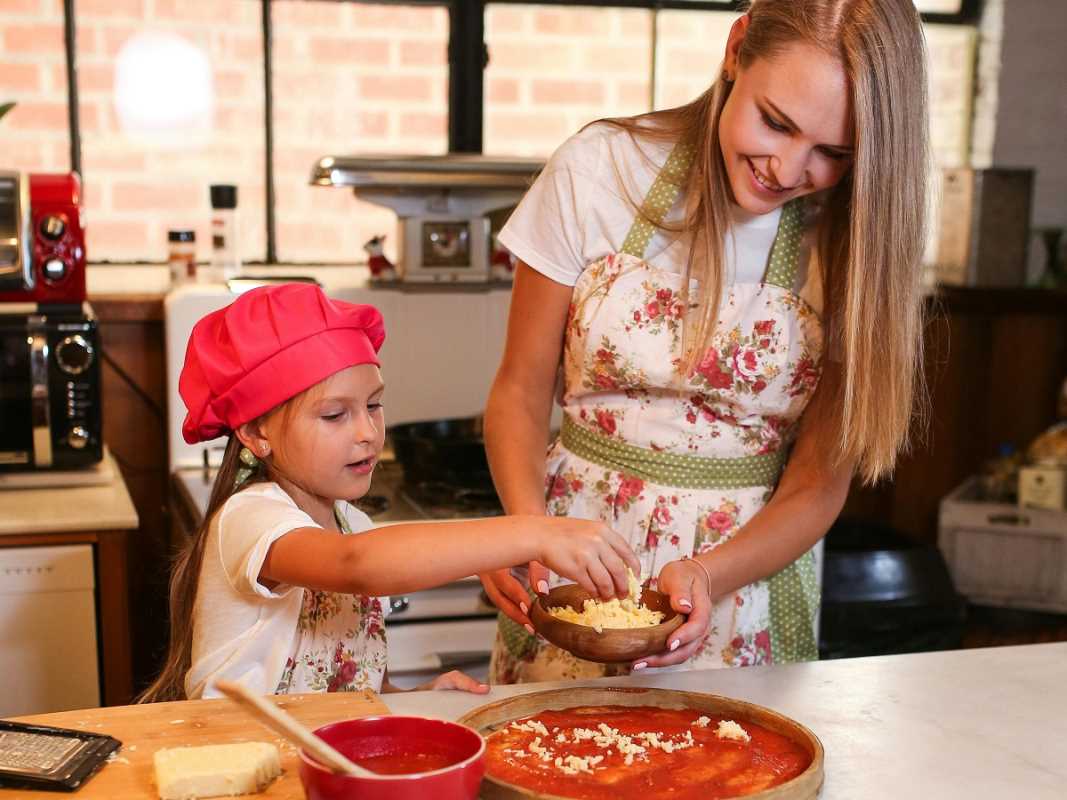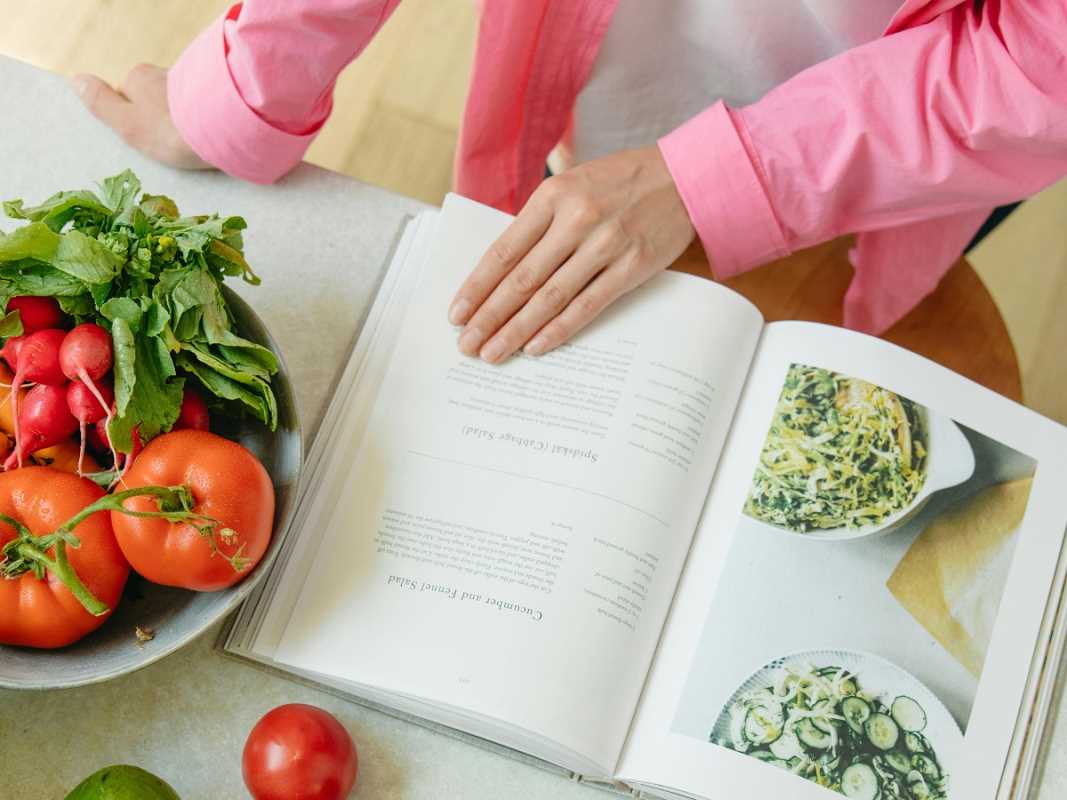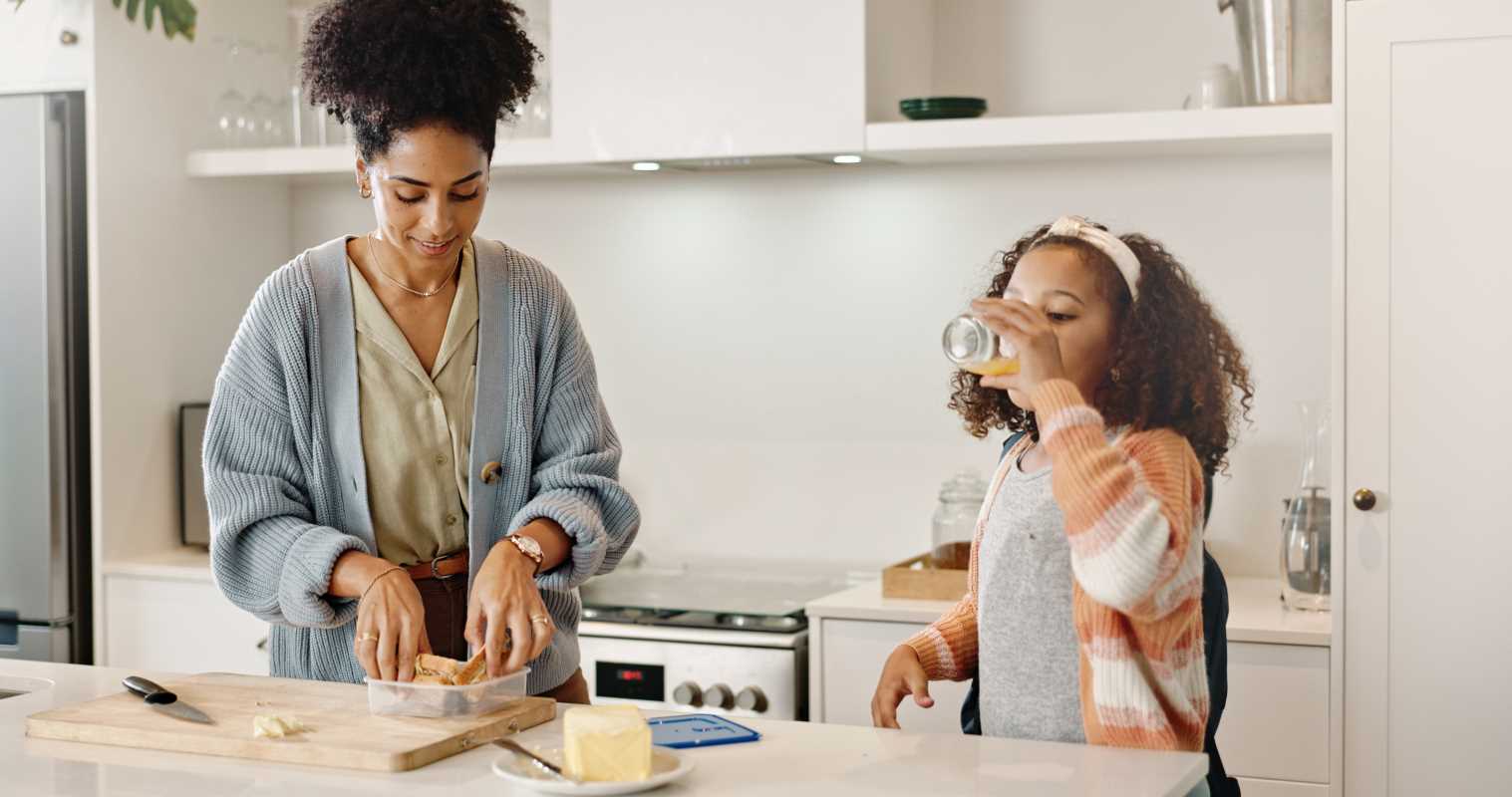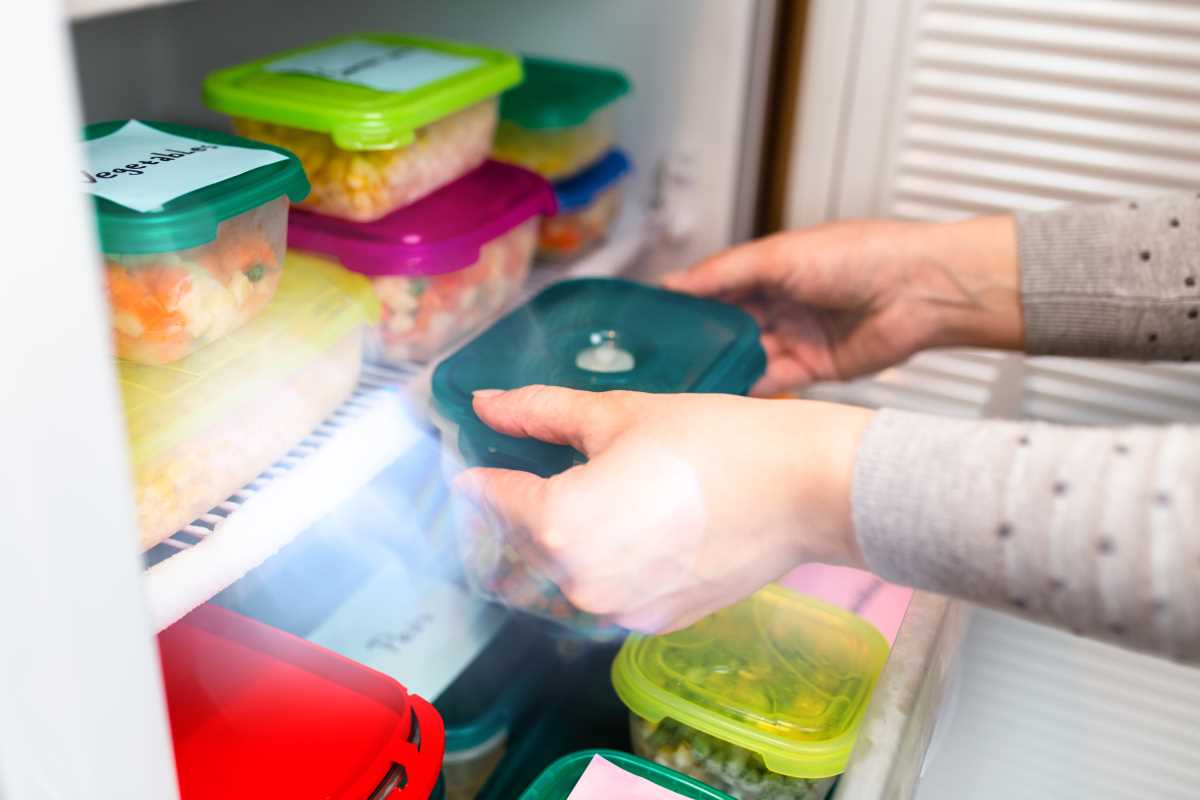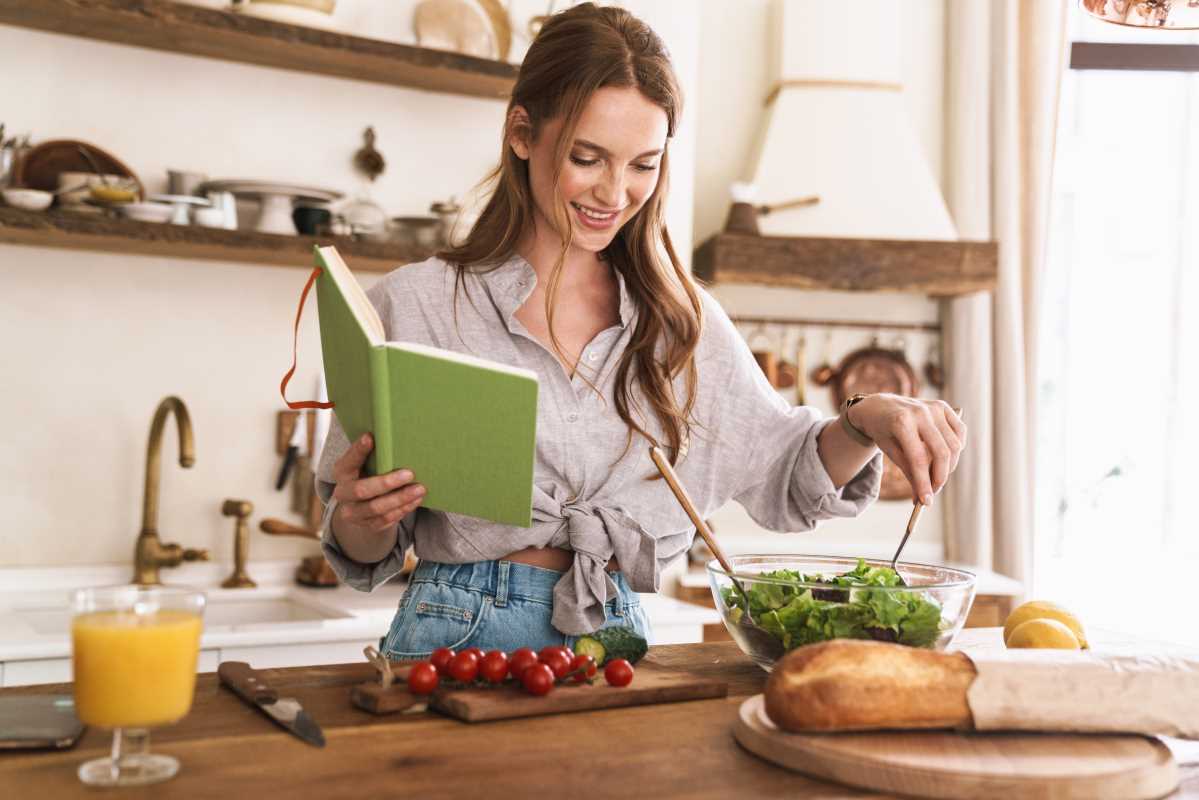Golden light fills the kitchen while the scent of simmering garlic and ripe tomatoes floats through the room. Laughter rings out as loved ones gather around, drawn by the warmth of a bubbling dish that promises comfort with every spoonful. Plates touch, silverware glimmers, and cheerful voices trade stories about school adventures, upcoming plans, and small victories that deserve celebration. All of this togetherness centers on one remarkable skillet, bringing both delicious flavors and easy preparation from the stove directly to the table, turning an ordinary evening into a memorable experience shared by everyone present.
Even after the last fork slides to the side, the counter remains mostly clear—no piles of separate pots, pans, and lids demanding attention. In just a few minutes, a damp cloth wipes away any stray splatter, and you’re ready for the next adventure, whether that’s a bedtime story or planning tomorrow’s schedule. It feels like magic when cleanup hardly interrupts the evening’s rhythm.
Kitchen Shortcut You Can Rely On
Choosing a one-pot approach turns a busy kitchen into a calm workspace. Instead of bouncing between saucepans and baking dishes, you focus on a single base vessel where flavors deepen and meld naturally. With just one vessel on the burner, your attention stays on stirring, tasting, and sharing stories, not on juggling cookware. This simplicity has a surprising psychological effect: as the pot bubbles gently, stress levels dip, and everyone feels invited to linger at the table.
When each ingredient layers into the same skillet or Dutch oven, scents swirl together from the very first chop of onion to the final sprinkle of herbs. That aroma acts like an invitation bell, drawing everyone closer. The visible progress in a single dish becomes a shared experience: stirring transforms raw bits into a hearty meal, and hearing the gentle simmer signals that dinner will be ready soon. This shared sensory journey builds connection as powerfully as any formal mealtime ritual.
Building Stronger Connections at the Table
Gathering around a steaming pot feels more relaxed than individual place settings and separate courses. As you ladle onto plates, you naturally talk through what’s on top—fresh basil, a swirl of yogurt, or a squeeze of lemon—inviting suggestions and tastes from every seat. This give-and-take sparks creativity and laughter, turning each serving into a collaborative moment. The simplicity of a communal dish encourages everyone to engage, share memories, and offer feedback on texture and spice, deepening the sense of togetherness beyond the food itself.
Sharing directly from the hearth of the kitchen enhances the home’s warmth. Children lean over to get just the right bite; partners ask for a pinch more heat. Every request feels casual and open because the pot sits within reach, not hidden behind closed oven doors. That casual access creates tiny moments of connection—hands reaching, forks clinking, voices chiming in on flavor tweaks—that make the evening feel like a team effort rather than a chore.
Step-by-Step Meal Assembly Guide
Turn everyday cooking into a smooth and efficient ritual with these practical phases.
1. Ingredient Organization
Purpose: Cut downtime and reduce waste by pre-grouping ingredients
Steps:
- Lay out a cutting board and knife within easy reach
- Chop all vegetables first, then prep proteins
- Measure spices into small bowls or ramekins
- Cost: Minimal (reuse small bowls)
- Availability: Standard kitchen basics
- Insider Tip: Store pre-measured spice mixes in freezer-safe containers for quick, fresh use
2. Sautéing Base
Purpose: Build deep flavor before liquids go in
Steps:
- Heat oil over medium until it shimmers
- Add aromatics like garlic or ginger; stir for 30 seconds
- Add chopped onions and cook until translucent at the edges
- Cost: ~$0.50 per meal for aromatics
- Insider Tip: Add a pinch of salt to onions early—it draws out moisture and speeds browning
3. Liquid Addition
Purpose: Create a simmer-friendly base that melds flavors evenly
Steps:
- Pour broth or water to just cover base ingredients
- Add canned tomatoes or coconut milk as needed
- Lower heat to a gentle boil
- Metric: Use 1–1.5 cups of liquid per 2 cups of solids
- Insider Tip: Keep a ladle handy—monitor liquid levels without lifting the lid too often
4. Protein Folding
Purpose: Achieve tender, evenly cooked bites
Steps:
- Nestle protein pieces gently into the simmering base
- Push just below the surface for even heat exposure
- Cover and simmer until proteins turn opaque
- Cost: $3–$8 depending on protein type
- Insider Tip: Marinate proteins overnight in a sealed pouch to enhance flavor and reduce cook time
5. Finishing Touches
Purpose: Add brightness, contrast, and final flavor hits
Steps:
- Stir in fresh herbs, grated cheese, or a spoon of yogurt
- Squeeze lemon or lime juice on top
- Taste and adjust salt or spice to preference
- Cost: Minimal—use windowsill herbs or pantry citrus
- Insider Tip: Set aside a pinch of fresh greens to sprinkle over plated dishes for visual appeal and freshness
Efficient Preparation Tips
- Gather key tools—sharp knife, heatproof spatula, heavy-bottomed pot—before you start to save frantic last-minute searches and maintain focus on chopping and stirring.
- Use a kitchen timer set in intervals to remind you when to stir, add ingredients, and reduce heat, so you can multitask without losing track of simmering stages.
- Batch chop veggies for two or three dishes at once, then freeze extras in labeled bags. When time’s tight, thaw directly into the pot to save up to ten minutes.
Organized mise en place turns cooking into a sequence of simple moves rather than a scramble. When everything rests at arm’s length, you flow through each step with confidence. A lined sink or counter space for discards keeps the workstation tidy, so you never lose sight of the pot’s progress or get overwhelmed by scraps piling up.
Techniques for Flavorful One-Pot Meals
Layer spices at different stages: toast whole seeds at the beginning, fold in ground spices during the sauté, and finish with delicate fresh herbs. This method unlocks each spice’s full aroma. For example, mustard seeds crackle invitingly when heated dry for 30 seconds, releasing an earthy pop that underpins the dish.
Balance textures by adding quick-cooking grains—like couscous or thin rice—toward the end of simmering. These grains absorb liquid without turning mushy. If you prefer beans, choose pre-soaked pulses that only need ten minutes in the hot broth, maintaining a firm bite while letting flavor meld throughout the pot.
Easy Weeknight Dinners That Keep Messes Small
Tomato Basil Chicken Stew
Steps:
- Brown chicken thighs in a pot
- Add canned tomatoes, garlic, and basil
- Simmer for 20 minutes
- Taste and add a splash of cream
- Finish with chopped basil
- Serve straight from the pot — no extra dishes needed
Veggie Curry with Lentils
Steps:
- Sauté onions, garlic, and ginger
- Sprinkle curry powder
- Add coconut milk and red lentils
- Cover and cook until lentils soften
- Stir in spinach
- Ladle into bowls and garnish with cilantro — one pan, colorful meal
Sausage and Pepper Pasta
Steps:
- Slice and brown sausages in a pot
- Add bell peppers and onions
- Pour in marinara sauce and dry pasta
- Add enough water to barely cover
- Stir once, cover, and simmer until pasta is cooked
- Stir again, plate, and sprinkle with cheese
- A hearty, colorful dish that minimizes cleanup
Dishing straight from a single vessel allows everyone to choose their portion size and preferred garnishes. The crust that forms around the edges of a heavy pan adds extra crunch—feel free to spoon that directly onto plates for a special touch.
Smart Cleanup Tips
Simplify cleanup by soaking pots with hot water and soap right after dinner, while you tidy up the table. Use a flexible silicone scraper to lift residue without damage. With one-pot meals and a few smart habits, you’ll wrap up dinner with ease—and enjoy more time to unwind.
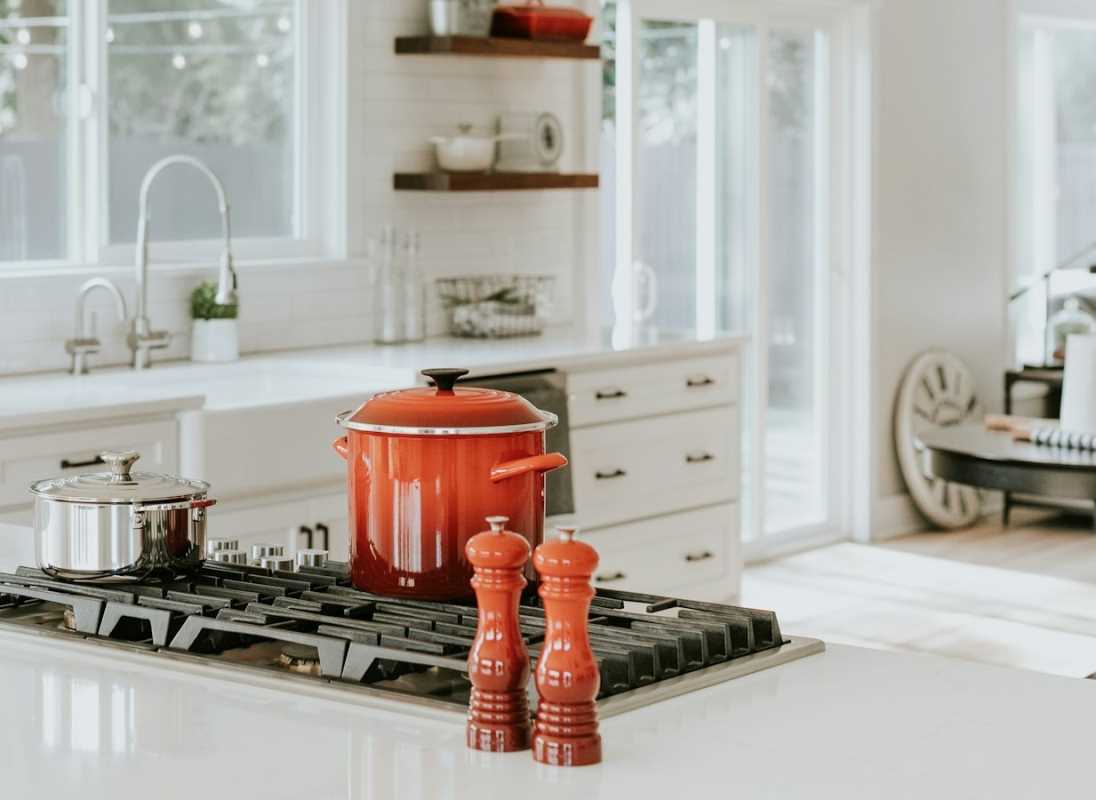 (Image via
(Image via
